Fórmula 1: ¿Qué caracteriza a los circuitos modernos? — What characterizes modern circuits? [ESP-ENG] #F1
Hace un tiempo atrás, traía a Full Deportes una publicación referente a los circuitos clásicos o de leyenda. Allí se mencionaban, a mi criterio, algunas características esenciales de los circuitos que la Fórmula 1 conoce y conoció desde sus inicios en el Siglo pasado. A no muchos días del inicio de la temporada 2022 de la Fórmula 1, abordaremos algunos circuitos modernos y sus características.
Some time ago, I brought to Full Deportes a publication about classic or legend circuits. There were mentioned, in my opinion, some essential characteristics of the circuits that Formula 1 knows and knew since its beginnings in the last century. Not many days before the start of the Formula 1 season 2022, we will address some modern circuits and their characteristics.
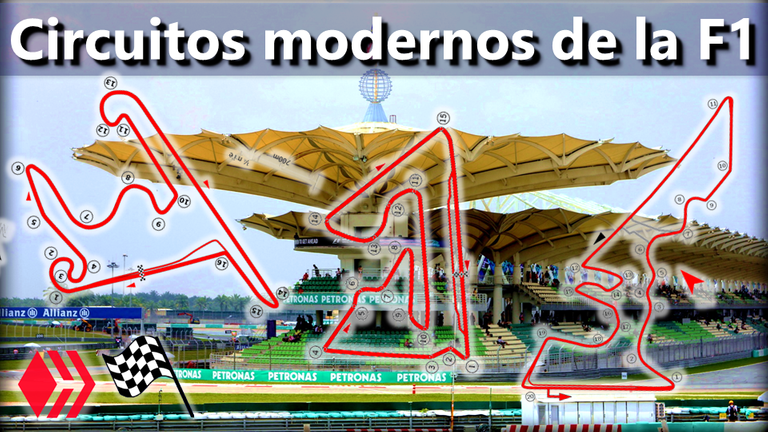
Cubierto este tema particular, solo quedaba abordar otro: ¿Qué caracteriza a los circuitos más modernos? Si sigues la Fórmula 1, probablemente habrás notado que algunos circuitos son muy diferentes a otros, y las carreras suelen tener un desenvolvimiento diferente.
Hablar de los circuitos modernos es un poco complicado, porque a diferencia de los circuitos clásicos, presentan más diferencias entre sí, y variaciones que los hacen difíciles de clasificar, incluso algunos de ellos combinan aspectos modernos con aspectos clásicos.
A pesar de que algunos circuitos clásicos han sufrido muchas modificaciones que los hacen ser "Más modernos", se puede decir que su configuración original, en la mayoría de los casos, tienen características muy marcadas de "circuito clásico" y que aún se preservan, al menos parcialmente.
Para caracterizar a los circuitos clásicos, creo que podría caracterizarlos en al menos 4 tipos:
Having covered this particular topic, it only remained to address another one: What characterizes the most modern circuits? If you follow Formula 1, you will probably have noticed that some circuits are very different from others, and the races usually have a different development.
Talking about modern circuits is a bit complicated, because unlike the classic circuits, they present more differences between them, and variations that make them difficult to classify, even some of them combine modern aspects with classic aspects.
Although some classic circuits have undergone many modifications that make them "more modern", it can be said that their original configuration, in most cases, have very pronounced characteristics of a "classic circuit" and that they are still preserved, at least partially.
To characterize the classic circuits, I think I could characterize them in at least 4 types:
Circuitos Semi-modernos/Semi-modern Circuits
Los llamo de esta manera porque son circuitos construidos en años más recientes que los circuitos clásicos, pero tienen algunas características que los asemeja con los circuitos de leyenda.
I call them this way because they are circuits built in more recent years than the classic circuits, but they have some characteristics that make them similar to the legendary circuits.
Sepang
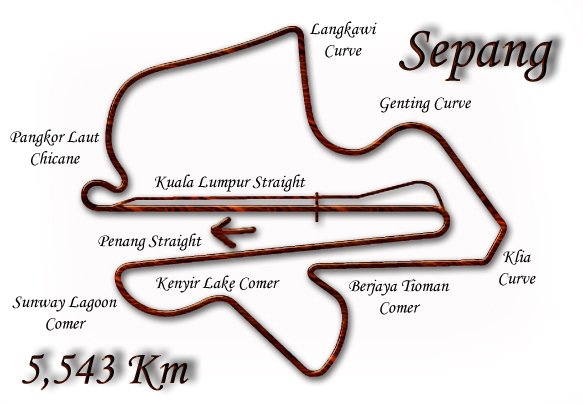
Istambul Park
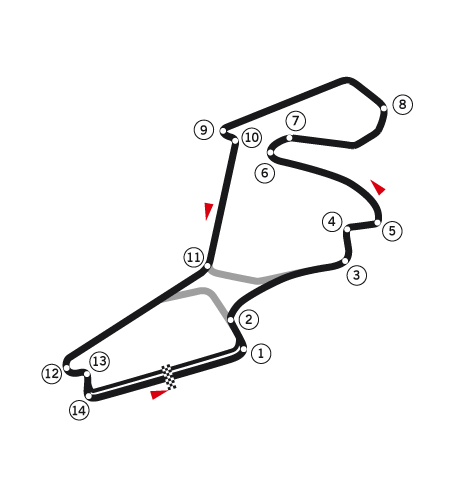
Magny-Cours

Shanghai
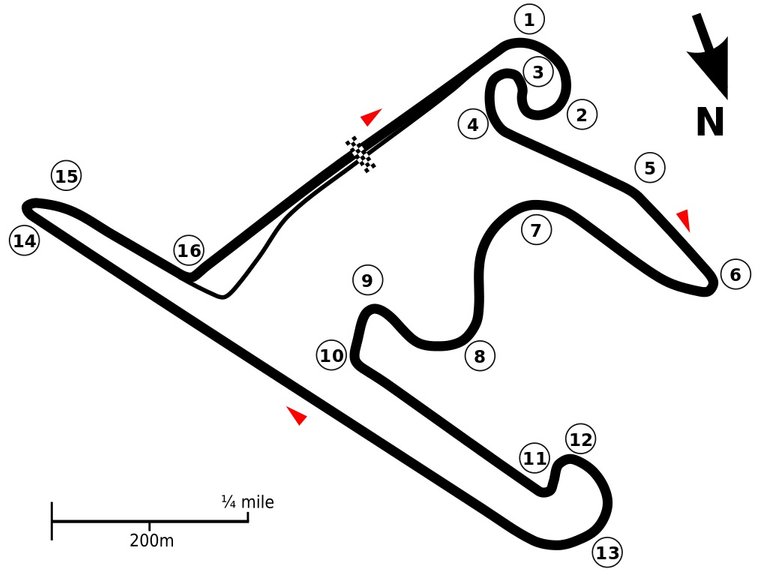
Losail
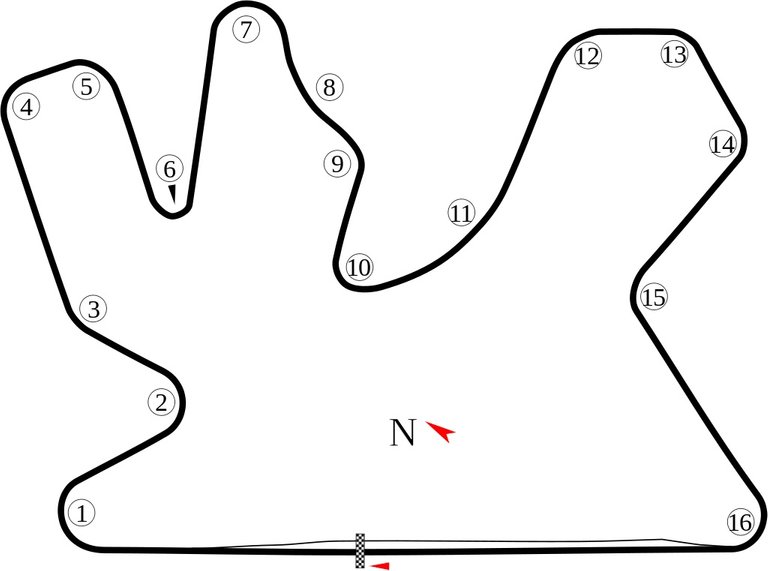
Estos circuitos, en su mayoría, fueron construidos entre 1990 y 2005. Son circuitos que de alguna manera conservan algunas características clásicas como curvas de alta velocidad, curvas muy fluidas, un trazado redondeado, y pocas zonas trabadas o lentas. En el caso de Losail, las zonas más trabadas son en realidad curvas muy redondeadas, a diferencia de Istambul, cuyas últimas curvas son bastante cerradas y lentas, pero son una pequeña parte del circuito.
These circuits, for the most part, were built between 1990 and 2005. They are circuits that somehow retain some classic characteristics such as high speed corners, very flowing corners, a rounded layout, and few tight or slow areas. In the case of Losail, the tightest areas are actually very rounded corners, unlike Istanbul, whose last corners are quite tight and slow, but they are a small part of the circuit.
Muy técnicos (no callejeros)/Very technical (not street)
Estos circuitos destacan por ser menos "fluidos" que los circuitos clásicos, debido a sus curvas más lentas y frenadas frecuentes. Esto exige mayor carga aerodinámica y configuraciones mecánicas que maximicen el paso del auto en zonas lentas, algunas veces reduciendo la facilidad para adelantar. Estos circuitos suelen tener rectas largas, pero muchas de sus curvas implican frenadas a fondo, reducir la velocidad al mínimo.
These circuits stand out for being less "fluid" than the classic circuits, due to their slower curves and frequent braking. This requires more downforce and mechanical configurations that maximize the car's pace in slower areas, sometimes reducing the ease of overtaking. These circuits usually have long straights, but many of their corners involve hard braking, reducing speed to a minimum.
Yeongam
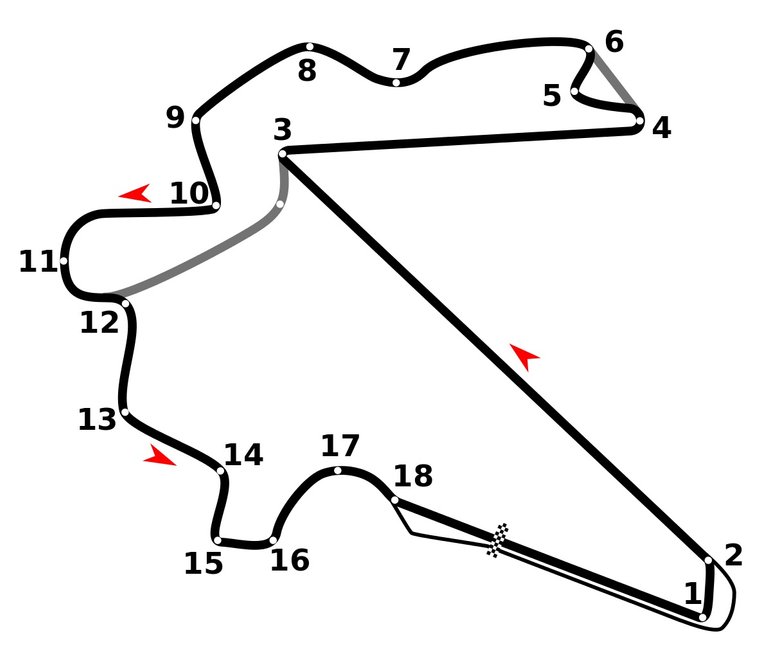
Sochi
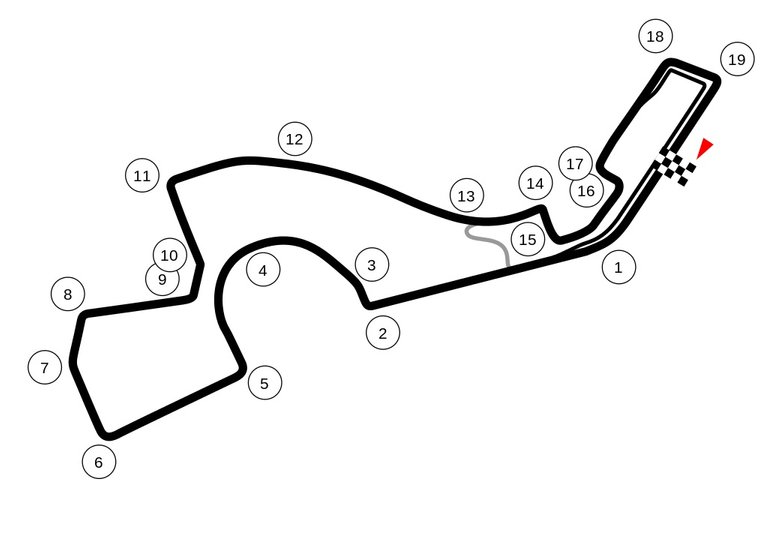
Yas Marina

Buddh
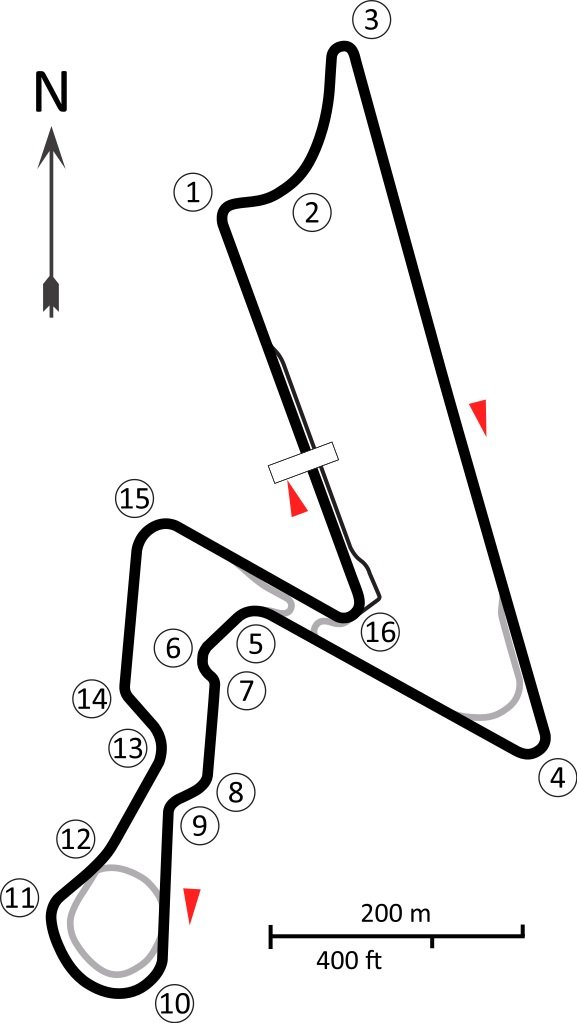
Sakhir
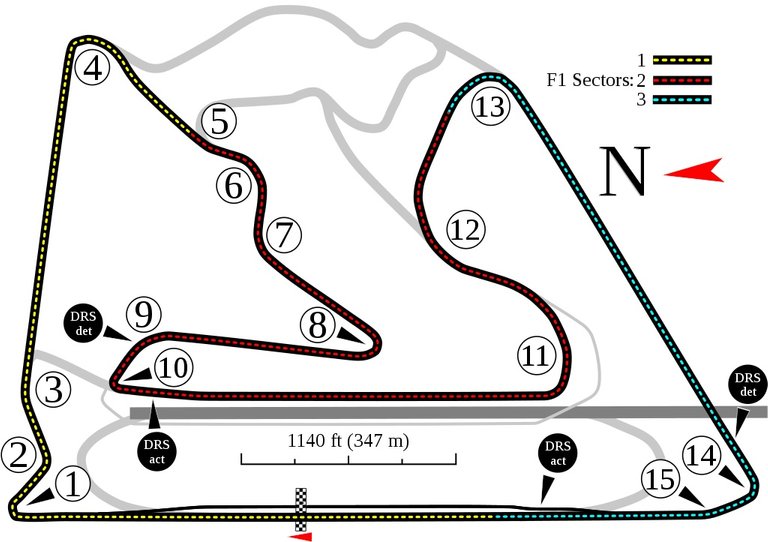
De esta corta lista, hay un circuito que claramente "domina" en popularidad por encima de los otros 3. El circuito de Sakhir, en Bahrein, ha sido por varios años ya el que inicia la temporada. Hemos tenido en Bahrein carreras muy emocionantes, y esto se debe a algunos factores como la disposición de sus curvas, que lo hacen favorecer al espectáculo, a diferencia de Sochi o el "desastre" de Yeongam.
El caso de Yas Marina es un poco diferente, puesto que en 2021 pasó de ser un circuito muy técnico a un circuito un poco más "fluido" debido a la modificación que sufrió. Se redujo la cantidad de curvas lentas, haciéndolo un poco más rápido. Esto ayudó un poco a favorecer el espectáculo, como ya vimos en la final, donde Max verstappen adelantó a Lewis Hamilton en una de las curvas nuevas.
From this short list, there is one circuit that clearly "dominates" in popularity over the other 3. The Sakhir circuit, in Bahrain, has been for several years already the one that starts the season. We have had in Bahrain very exciting races, and this is due to some factors such as the layout of its curves, which make it favor the spectacle, unlike Sochi or the "disaster" of Yeongam.
The case of Yas Marina is a bit different, since in 2021 it went from being a very technical circuit to a slightly more "fluid" circuit due to the modification it suffered. The number of slow corners was reduced, making it a bit faster. This helped a bit to favor the show, as we already saw in the final, where Max Verstappen overtook Lewis Hamilton in one of the new corners.
Urbanos, con o sin éxito/Urban, successful or not
Los circuitos callejeros suelen encantar a algunos y desencantar a otros, pero claramente se distinguen de otros circuitos modernos. A diferencia de Mónaco, estos circuitos callejeros modernos suelen ser más anchos, más largos y con curvas más lentas.
Puede sonar extraño decirlo, pero muchas de las curvas de Mónaco no son precisamente lentas, sino curvas rápidas (relativamente hablando) entre los muros. En los circuitos urbanos modernos las curvas implican frenadas más bruscas y mayor reducción de velocidad, y pueden incluso incluir rectas largas.
Street circuits tend to delight some and disenchant others, but they are clearly distinguishable from other modern circuits. Unlike Monaco, these modern street circuits tend to be wider, longer and with slower corners.
It may sound strange to say, but many of Monaco's corners are not exactly slow, but fast (relatively speaking) corners between the walls. On modern street circuits the corners involve harder braking and more speed reduction, and may even include long straights.
Valencia
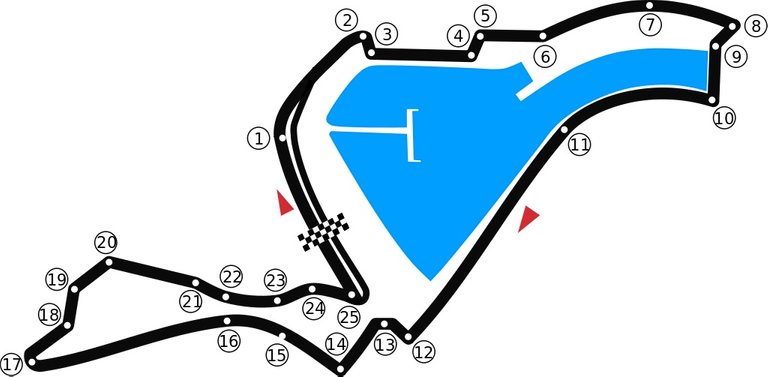
Marina Bay

Baku
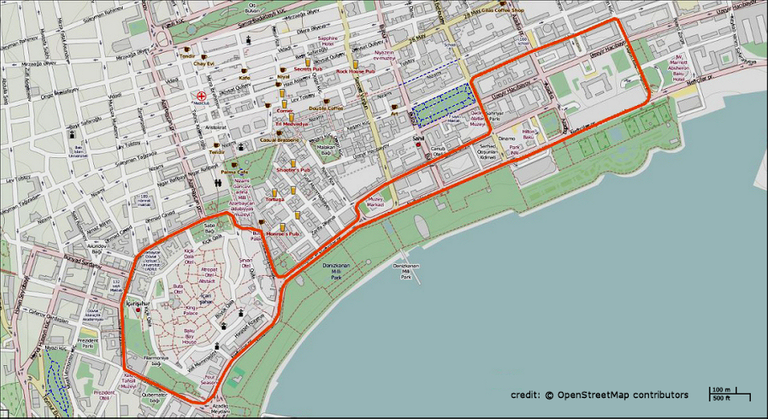
Jeddah
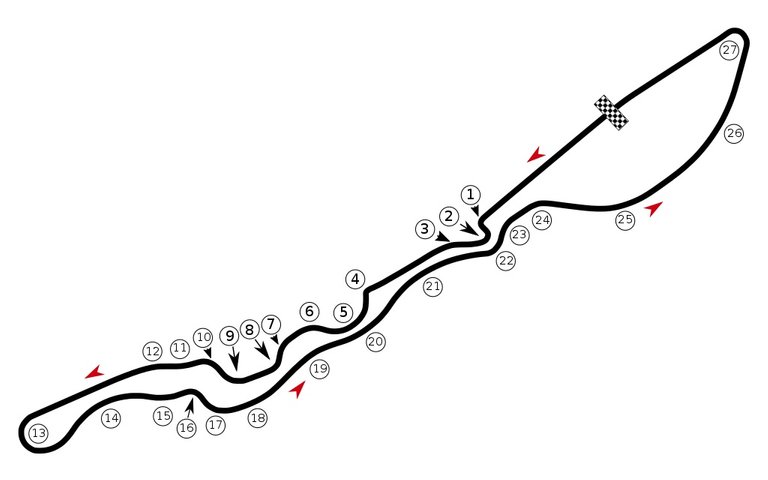
En esta lista, hay tres circuitos que comparten ciertas características, son lentos y poco fluidos. Pero Jeddah destaca por ser disruptivo en el aspecto de que tiene curvas muy rápidas y fluidas. Es un circuito casi tan rápido como Suzuka, con la diferencia de ser callejero. Esto se debe, bajo mi visión, que la Fórmula 1 últimamente está intentando volver a la esencia de los circuitos clásicos, incluso en circuitos callejeros.
In this list, there are three circuits that share certain characteristics, they are slow and not very fluid. But Jeddah stands out for being disruptive in the aspect that it has very fast and fluid corners. It is a circuit almost as fast as Suzuka, with the difference of being a street circuit. This is due, in my view, to the fact that Formula 1 lately is trying to go back to the essence of the classic circuits, even on street circuits.
Otros/Others
Al mismo tiempo, tenemos otros circuitos modernos que personalmente hayo difícil darle una clasificación definida. Son circuitos que no entran en una categoría particular sino que contienen un poco de todo o son algo singulares. Quizás algunos ya nombrados arriba también puedan clasificarse como "indefinido", bajo el criterio de otros.
At the same time, we have other modern circuits that I personally find difficult to give a definite classification. They are circuits that do not fall into a particular category but contain a bit of everything or are somewhat unique. Perhaps some of those mentioned above can also be classified as "undefined", according to the criteria of others.
Indianapolís
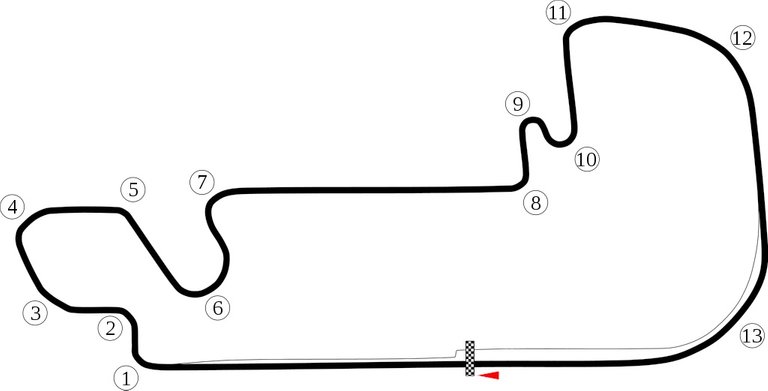
Austin
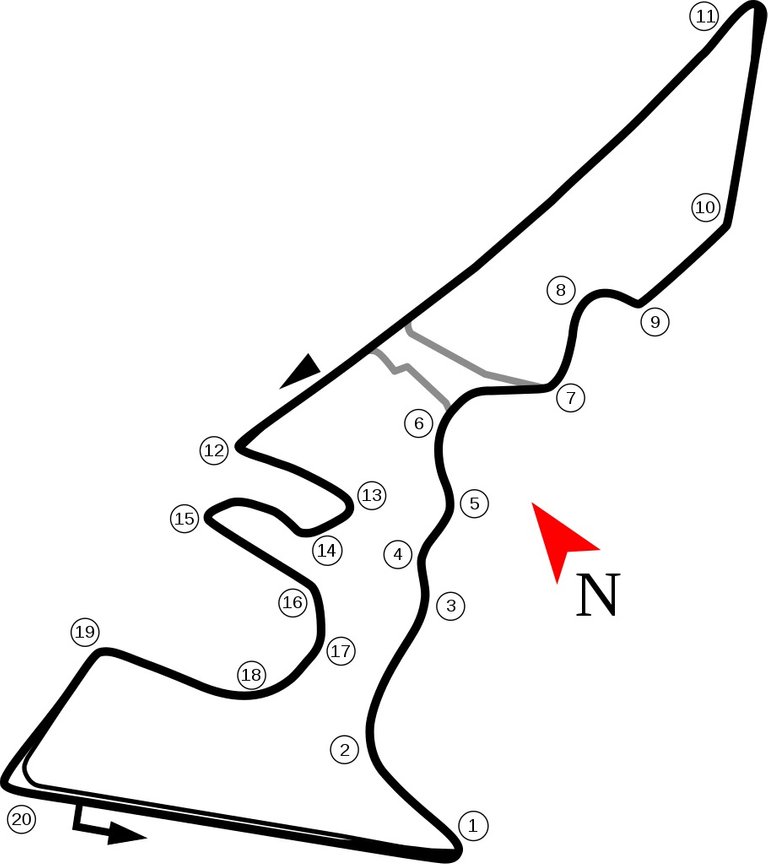
Albert Park

Podemos destacar que Austin es un circuito que combina un poco de todo, desde las zonas rápidas de Suzuka y Silverstone, hasta las zonas lentas de Hungaroring o Hockemheim. Este circuito combina muy bien varios aspectos y esto lo ha hecho cuidando el espectáculo que pueda dar. Albert Park en Melbourne, Australia, es un circuito singular en el aspecto de que es rápido y sus curvas se basan en "situarse y salir disparado", algo que lo caracteriza y diferencia de otros circuitos, aunque quizás podríamos compararlo con el circuito de Gilles Villeneuve, en Montreal, Canadá.
En resumen, los circuitos modernos se caracterizan por ser más "técnicos" que los antiguos, presentan diseños más regulares, y suelen presentar curvas en general más lentas. Suelen acompañar además alguna atracción turística, a diferencia de muchos circuitos clásicos que se encuentran en medio de zonas rurales en algunos casos. Un ejemplo de esto es el circuito de Sochi, el cual transcurre entre las instalaciones que se usaron para las olimpiadas de invierno de 2014.
We can highlight that Austin is a circuit that combines a bit of everything, from the fast areas of Suzuka and Silverstone, to the slow areas of Hungaroring or Hockemheim. This circuit combines very well several aspects and this has been done taking care of the show it can give. Albert Park in Melbourne, Australia, is a unique circuit in the aspect that it is fast and its curves are based on " set and run", something that characterizes and differentiates it from other circuits, although perhaps we could compare it with the circuit of Gilles Villeneuve, in Montreal, Canada.
In summary, modern circuits are characterized by being more "technical" than the old ones, have more regular designs, and tend to have slower curves in general. They are usually accompanied by a tourist attraction, unlike many classic circuits that are located in the middle of rural areas in some cases. An example of this is the Sochi circuit, which runs between the facilities used for the 2014 Winter Olympics.
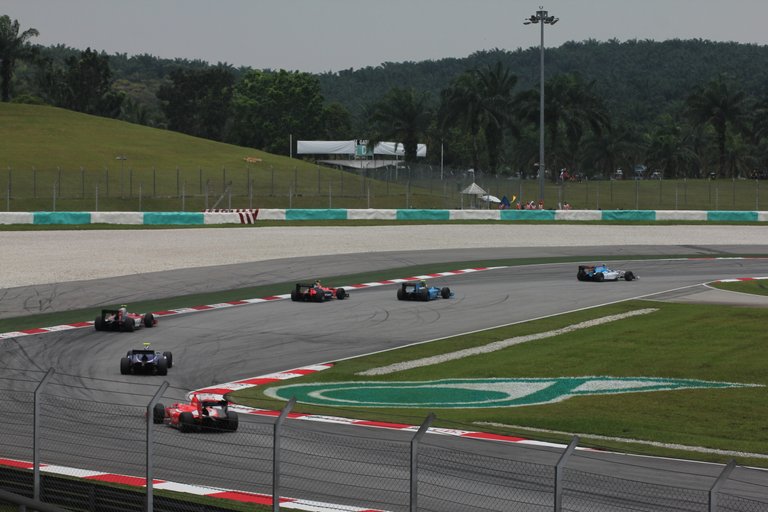
Viendo las recientes incorporaciones de Jeddah y modificaciones realizadas a Yas Marina y Barcelona-Catalunya ¿Pasará la Fórmula 1 a crear circuitos modernos cada vez más similares a los clásicos...?
With the recent additions of Jeddah and modifications made to Yas Marina and Barcelona-Catalunya, will Formula 1 move on to create modern circuits more and more similar to the classic ones...?
Translated to English with the help of DeepL.com.
| ¡Gracias por visitar! — Deja tu comentario 🚥🏆  |
https://twitter.com/acontcivil/status/1494703202914156549
The rewards earned on this comment will go directly to the person sharing the post on Twitter as long as they are registered with @poshtoken. Sign up at https://hiveposh.com.
En algunos casos tienen también mucho que ver con la filosofía deportiva del país que los hospita. Me explico mejor: EE UU nunca fue un país con tradición de F1 aunque haya tenido circuitos en ambas costas (recuerdo cuando se corrían los grandes premios del este en el circuito callejero de Detroit entre 1982 y 1988 (en el circuito callejero de Detroit entre 1982 y 1988) y del oeste (en el circuito callejero de Long Beach, entre 1976 y 1983) y lo suyo apunta a la velocidad que caracteriza a sus dos grandes pasiones NASCAR y el circuito de Indianápolis on las famosas 500 Millas. Es todo velocidad pura circuitos pocos trabados.
En cambio los circuitos verdaderamente técnicos que ponen a prueba las condiciones del piloto son en su mayoría los europeos, por ejemplo Spa-Francorchamps y Silverstone entre otros.
Yas Marina tiene que ser profundamente modificado, no puede intervenir la safety car en continuación porque la carrera se falsea como el año pasado.
En función de la seguridad algunos circuitos han creado chicanas y cortes donde no deberían estar, el espectáculo se ha resentido y los accidentes y despistes siguen igual.
Tampoco me convencen demasiado los circuitos con un solo rectilíneo y varias curvas cerradas donde es imposible adelantar porque todo depende de la potencia del motor en la recta.
De los circuitos relativamente nuevos el que más me gusta es el de Sakhir. Tiene cuatro rectas de variada longitud, una con una pequeña curva y el resto está distribuido equitativamente con una simetría tal que los autos no deben frenar bruscamente para después repartir desde cero.
Creo que desde el punto de vista del espectáculo es el más atractivo.
Interesante reseña @acont, gracias por compartirla en vísperas del inicio de los primeros tests de la temporada 2022, para irnos acostumbrando a un 2022 que si todo marcha según lo programado va ser un récord enn la historia de la F1 con 23 carreras.
Saludos.
Saludos @greengalletti pues es cierto, los circuitos que ponen a prueba al piloto suelen ser los europeos, ya que la tradición por correr se concentra allí. No había analizado eso del Sakhir, de hecho es un circuito muy técnico pero por esas características logra dar bastante espectáculo.